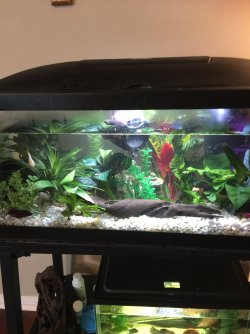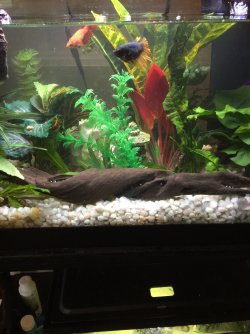Thank you again, both of you. I am going to leave her in her tank since she is alone. I also want to finish the current treatment. I’m sure I can’t add methylene blue along with the other meds so I either need to cut out the MB it continuethe dips. I must say and many will disagree with me but...
My tanks were all fine while using gravel. Since switching to sand, every single tank with sand has had issues. I am convinced that bad bacteria remains in sand. You can't clean The bottom like you can with gravel. Starting tonight, I am switching out my 5 tanks with sand and going back to gravel substrate. I never had a sick fish until I went to sand. Just my opinion and I’m sticking to it. Again,thanks guys. I hope Sky pulls through this but I do n’t know at this point.
My tanks were all fine while using gravel. Since switching to sand, every single tank with sand has had issues. I am convinced that bad bacteria remains in sand. You can't clean The bottom like you can with gravel. Starting tonight, I am switching out my 5 tanks with sand and going back to gravel substrate. I never had a sick fish until I went to sand. Just my opinion and I’m sticking to it. Again,thanks guys. I hope Sky pulls through this but I do n’t know at this point.



